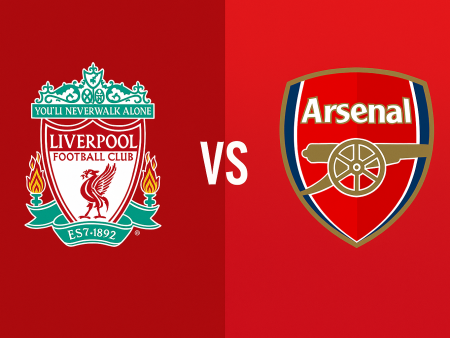How England’s Midfield Redefined Balance at the 2022 World Cup
England’s transformation in midfield during the 2022 FIFA World Cup became a central talking point for analysts and fans alike. Manager Gareth Southgate’s decision to shift his approach-moving away from the underperforming Mason Mount and instead entrusting Declan Rice, Jordan Henderson, and Jude Bellingham with key responsibilities-created a dynamic unit. This trio’s blend of experience, energy, and tactical flexibility played a pivotal role in England’s improved performances, and may hold the key to success against top-tier opponents like France.
The Defensive Structure Behind England’s Success
After a period of inconsistent form, particularly for Mason Mount, Southgate opted for a more robust and seasoned midfield. Declan Rice and Jordan Henderson sat deeper, while young Jude Bellingham was given an advanced role. This setup immediately improved England’s defensive resilience. Henderson’s arrival restored intensity to England’s pressing game-his experience at Liverpool had honed his ability to time and angle his pressing runs, maintaining organizational discipline while initiating pressure at just the right moments.
Jude Bellingham, typically accustomed to covering vast stretches of the pitch for Borussia Dortmund, benefited greatly from this restructured setup. With Reus injured at club level, Bellingham was often overburdened defensively. Within England’s midfield, he found a better balance: Henderson on the right, Bellingham on the left, and Rice anchoring behind. When England lost possession, this trio often organized into a 4-2-3-1 or shifted into a compact 4-1-4-1, pressing as a unit. Henderson’s instinct to join the press or sit as necessary lent the group vital tactical agility.
Bellingham’s relentless ball-winning ability became an asset in both shapes. His sharp instincts not only let him break up play but also spring into rapid counter attacks-now with more structure and less risk of leaving gaps in midfield. For example, his intervention against Senegal launched a devastating break, showcasing the explosiveness he brings as a box-crasher and playmaker.
Jordan Henderson’s contribution was not simply tactical awareness-he brought contagious leadership and tenacity, influencing not just the midfielders, but the collective defensive mindset of the team. Rice, renowned for his interceptions and positioning, completed this defensive wall, ensuring that opponents rarely found easy routes through the center of the park.
The Creative Engine: England’s Attacking Blueprint
England’s improved defensive platform served as a launching pad for swift and dangerous attacks. The criticisms about Southgate’s team being too defensive quickly faded as England scored freely, netting 12 goals in their first four matches. Much of this was thanks to Bellingham, who flourished as a genuine number 10-his energy led the press and helped England win the ball back higher up the pitch, often allowing attacking moves to start closer to the opponent’s box.
Bellingham’s ability to drop deep and collect possession, even from positions as withdrawn as left-back, enabled teammates like Luke Shaw to push wide and Phil Foden to move inside, creating overloads and stretching defensive lines. This tactical intelligence and variety allowed England to fluidly transition from defense to attack, bypassing compact midfields such as that of the USA, and catching opponents off guard with positional rotations.
Rice and Henderson provided vital support-when one surged forward, the other covered defensive spaces. Against Senegal, this chemistry manifested in seamless progressions through midfield, quick combinations, and well-timed runs beyond the last line.
Henderson’s offensive impact also grew. His knack for advancing into the box at the right time was highlighted by his opening goal against Senegal, a move engineered by Bellingham’s driving run and precise pass. Even at 32, Henderson’s stamina and timing made him a surprise threat in advanced areas. With Bellingham drifting wide or deep and Rice diligently holding the center, spaces opened up for Harry Kane to drop deep, while wingers like Saka and Foden attacked the channels.
This element of surprise-midfielders interchanging, attackers rotating, and defenders stepping up-made England’s midfield notably unpredictable and difficult for opponents to pin down.
The Tactical Evolution: Why This Midfield Trio Works
One of the hallmarks of international football’s greatest midfields is their ability to complement each other’s strengths and mitigate weaknesses. England have found such balance: Bellingham’s dynamism as a playmaking ‘10’, Henderson’s organizing and box-to-box shuttling, and Rice’s composure as a deep-lying playmaker and defensive screen.
Key strengths of this arrangement include:
- **Versatility**: Capable of shifting shapes between 4-3-3, 4-2-3-1, and 4-1-4-1 as the match situation demands.
- **Defensive Solidity**: Henderson and Rice form a strong foundation, covering spaces left by attacking full-backs or advancing midfielders.
- **Transition Play**: Bellingham’s quickness and creative instincts catalyze transitions, allowing England to counter with pace and precision.
- **Leadership and Maturity**: Each player contributes his own brand of leadership and competitive drive, fostering collective responsibility.
Southgate’s willingness to make tough calls-such as dropping Mount for the benefit of system balance-was instrumental in constructing an effective, cohesive midfield.
Conclusion: England’s Midfield Blueprint for the Future
The emergence of Rice, Henderson, and Bellingham as England’s midfield mainstay has given the Three Lions a blend of tactical discipline and creative flair seldom seen in recent years. Their ability to adapt between defensive and attacking phases, disrupt opposition play, and create opportunities underlines why this trio could be crucial in overcoming the biggest challenges, including the likes of France.
By constructing a midfield with versatility, leadership, and high game IQ, Southgate has positioned England to compete at the highest level-and perhaps, to finally turn promise into silverware on the world stage.













